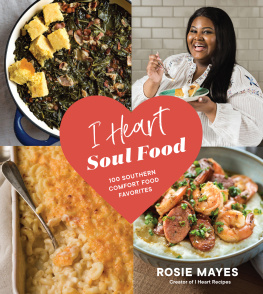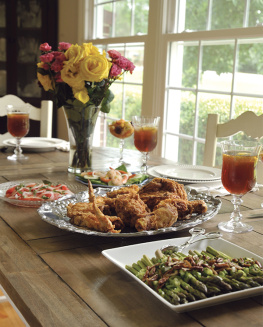2014 Fair Winds Press
Text 2014 Brys Stephens
First published in the USA in 2014 by
Fair Winds Press, a member of
Quayside Publishing Group
100 Cummings Center
Suite 406-L
Beverly, MA 01915-6101
www.fairwindspress.com
Visit www.QuarrySPOON.com and help us celebrate food and culture one spoonful at a time!
All rights reserved. No part of this book may be reproduced or utilized, in any form or by any means, electronic or mechanical, without prior permission in writing from the publisher.
17 16 15 14 13 1 2 3 4 5
ISBN: 978-1-59233-585-5
Digital edition published in 2013
eISBN: 978-62788-012-1
Digital edition: 978-1-6278-8012-1
Softcover edition: 978-1-5923-3585-5
Library of Congress Cataloging-in-Publication Data available
Cover and Book design by Kathie Alexander
Photography by Brys Stephens
The information in this book is for educational purposes only. It is not intended to replace the advice of a physician or medical practitioner. Please see your health care provider before beginning any new health program.
THE
NEW SOUTHERN TABLE
 CLASSIC INGREDIENTS REVISITED
CLASSIC INGREDIENTS REVISITED 
BRYS STEPHENS

 CONTENTS
CONTENTS
CHAPTER 1
Okra
Okra is a uniquely Southern vegetable. It has an earthy vegetal flavor when cooked quickly with dry heat or simmered in soups and stews, and it pairs well with bold, assertive flavors.
CHAPTER 2
Field Peas
A humble legume, field peas are underrated, versatile, and healthy. Many varieties can be found dried and frozen, but are at their best used fresh in the height of summer and simply cooked to enhance their natural flavor.
CHAPTER 3
Squash
Soft-skinned summer squash have an earthy, pumpkinlike flavor and are found throughout the world. Zucchini, yellow squash, and patty pan squash are common varieties. Squash pair well with tomatoes, basil, rosemary, aged cheeses, and citrus.
CHAPTER 4
Collard Greens
Collard greens are the quintessential Southern green. A relative of cabbage, collards grow year-round in the Deep Souths sandy soils. Theyre unrivaled when long-cooked with smoked pork or quick-sauted with internationally inspired flavors.
CHAPTER 5
Rice
Rice is the second-most consumed grain in the world after corn. The Lowcountry, from South Carolina to Georgia, was once the heart of its worldwide production. Whether white, brown, red, black, long- or short-grained, rice is still a Southern staple.
CHAPTER 6
Corn
The most consumed grain the world over, corn is an ancient grain with a sweet, nutty flavor. It is used in many cuisines, whether eaten fresh, cured and ground for grits and polenta, or ground for tortillas and tamales.
CHAPTER 7
Sweet Potatoes
Sweet potatoes are a potato-like root vegetable with an often bright-orange interior. In the South, theyre often mashed and made into sweet and savory holiday dishes. They are especially good simmered in stews, boiled, baked, and deep fried.
CHAPTER 8
Lima Beans
Lima beans come in a wide range of flavors, textures, and sizes. Native to Peru, limas are creamy and earthy and are high in protein. They work well in just about any dish that includes beans.
CHAPTER 9
Peanuts
The peanut looks and tastes like a nut, but its actually a legume. In the South, peanuts are often boiled whole, roasted, or incorporated into desserts. Theyre a staple protein in world cuisines from South America, to Africa, to Asia.
CHAPTER 10
Pecans
Native to North America, pecans were long a part of the diet of eastern Native American cultures. Today, pecans are enjoyed seasoned and roasted, incorporated into desserts and breakfast dishes, and used as a crust for meat or fish.
CHAPTER 11
Figs
An ancient fruit, the fig has long thrived in hot climates the world over. Bursting with sweetness when ripe, fresh figs have a short shelf life, while dried figs are a pantry staple. Figs grow especially well in Mediterranean climates.
CHAPTER 12
Peaches
Peaches are a fuzzy, juicy, flavorful summer fruit native to China, best enjoyed raw or simply cooked when at the peak of ripeness. They match especially well with creamy and crunchy textures, as well as with spicy and floral flavors.
CHAPTER 13
Watermelon
Watermelon is a Southern summer fruit native to Africa celebrated for its fruity melon flavor. Everything that goes well with itwhether tangy, tart, creamy, or crunchycomplements its sweetness and delicate texture.
CHAPTER 14
Cooking Notes
 INTRODUCTION
INTRODUCTION
My great-great-great-grandfather on my mothers side, a surgeon named David Ewart, studied medicine in Charleston, South Carolina, crossed the Atlantic to study in Paris, then returned to Charleston to serve as a surgeon in the Civil War.
David Ewarts great-grandson, Charles Whitten Walter, was born in Birmingham, Alabama. C. Witty, as his friends called him, was my grandfather, and I came by my love of gardening and cooking from him and my mother. He grew vegetables such as Jerusalem artichokes, cucumbers, and cabbage, and he pickled them in ceramic crocks. Memories of visiting his house are infused with the aroma of freshly baked biscuits, hickory smoke wafting from a smoker filled with pork shoulder, slabs of ribs and whole chickens, and the pungent, vinegary mop sauce that kept them moist.
My paternal grandfather, a third-generation Alabamian, grew up on a farm in southeastern Alabama. Even after settling in Birmingham, he maintained a deep love for the Southern crops he knew from his youth and held on to pecan groves and acres of high-bush blueberries near his hometown in Barbour County. Before dinners at his house in Birmingham, Id walk into the kitchen and watch African-American cooks dressed in white tend to flour-scattered cutting boards, hot ovens, and cast-iron pots of grease. One of the cooks, Mamie, sat on a stool tending to a deep fryer, using her thumb and forefinger to roll spoonfuls of cornmeal batter into the hot oil. She called it hot water corn bread and showed me how to bob and turn the dumplings around with a slotted spoon until they were set and golden, then drain them on a brown paper bag. Susie, another cook, tended to splattering fried chicken at the stove.
When dinner was ready, the cooks would pass platters of food from the kitchen through a folding partition over the counter to the dining room: mottle-crusted buttermilk fried chicken, steamy plain white rice with gravy, fresh-shucked corn on the cob slathered in butter, vinegary stewed collard greens, sweet potato casserole, field peas, fried okra, corn bread, fresh rolls, chocolate pie, sweet rolls, and coffee. Those traditional Southern meals were a blend of soul and country, a legacy of slavery and settlement, and they imbued me with a feel for the fundamental roots of Southern cooking.
Next page













 CLASSIC INGREDIENTS REVISITED
CLASSIC INGREDIENTS REVISITED 

